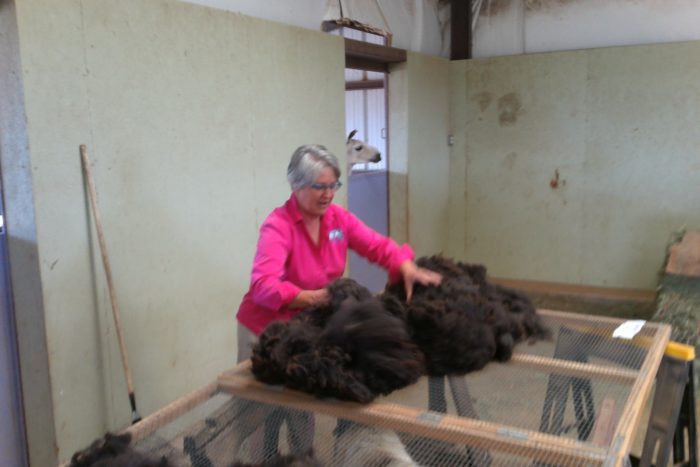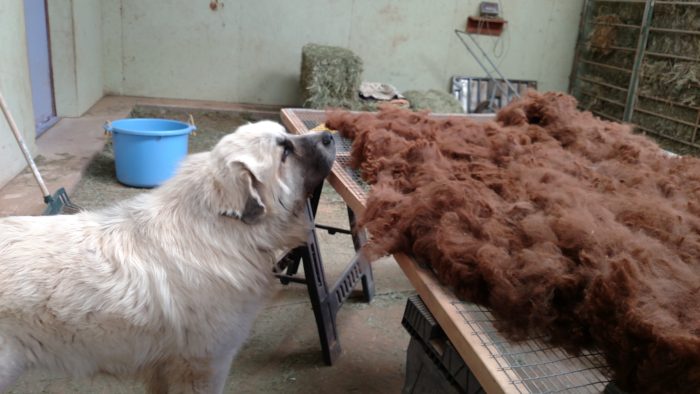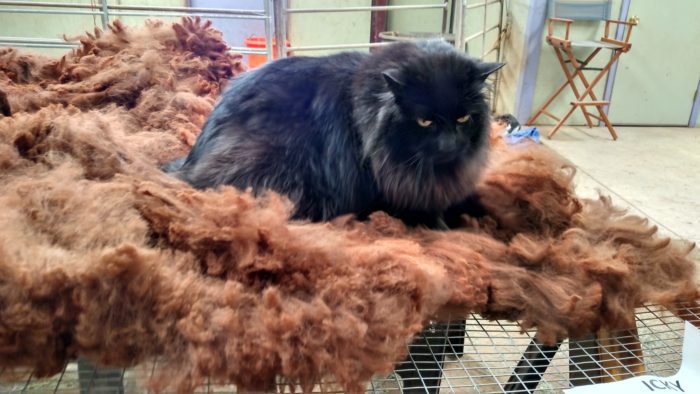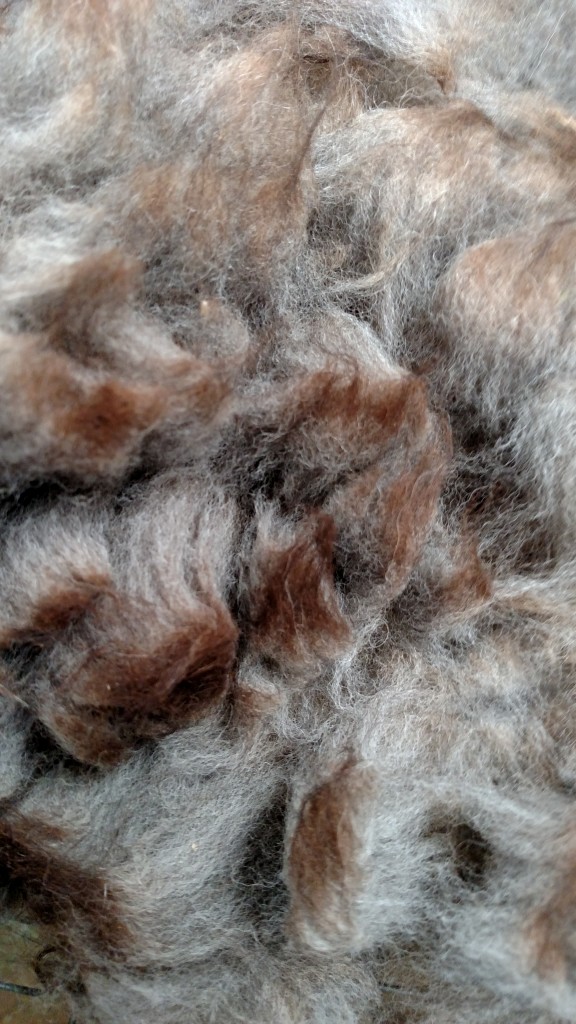One of our least favorite — hence most avoided — part of the fiber processes is skirting. This is where we take the fiber shorn from our alpacas, lay it out on a mesh table and pick through it by hand. The hand-picking process removes vegetation, matted or soiled fibers, second cuts (short small pieces of fiber left when the shearer went back over an area a second time), and inconsistent fibers. This step is done by me and Lee in our barn, (most friends avoid our phone calls if they know we are skirting), before we send the fibers to the mill to be washed and processed.
Why do we hate it so much? It is a tedious process, requiring concentration and focus. We have to stand at the skirting table for hours. Our finger tips get sore from the dirt and dust in the fiber. You get dirty. Real dirty. And bored. We are constantly shooing the cats off the fiber.




We have a handbuilt skirting table that a favorite Houstonian built for us several years ago. It is constructed from chicken wire and 2 x 4s, measures 3′ x 6′ and rests on saw horses. We lay out the blanket (the fleece from the alpacas’s torso minus the underbelly fibers) with the cut side up. Our larger alpacas’ blankets will fill the entire table. We then move around the table, handling every part of the blanket, pulling off nonconforming fibers. Every alpaca blanket, even from the best of animals, will have areas of the blanket that need to be removed before milling.
And the “love” part of it? We get to touch and feel our harvested fibers, oohing and aahing over the colors, the brightness, the waves of crimp and best of all that wonderful alpaca softness. We analyze each animal’s fiber and note changes. Some alpacas maintain their fine soft lustrous fiber longer than others. The handling of Jazzman‘s fibers (the first alpaca born at our ranch) is still soft, shiny and consistent eight year’s later. It is still a breeze and a delight to skirt.
Several of our older females show their aging by the addition of white and grey fibers throughout their fleece. Salt and pepper, just like me. All of the alpacas develop coarse fibers called guard hair as they age. When they are young, guard hair tends to cluster in areas like their chests. Some guard hair areas must be pulled out and thrown away. Others are worth working through, pulling out the coarser fibers. Our grey fibers require the most work because they have longer dark fibers, similar to guard hairs, which need to be pulled out if the fiber is to be used for clothing worn next to the skin.
Skirting is particularly important to our Whispirit line because the quality of skirting impacts the feel of our garments. Fleece that contains inconsistent lengths, second cuts, and variations in the diameter of the individual fibers can feel coarse even when most of the fibers are incredibly soft. Our garments have that wonderful alpaca softness due to our skirting and practices of constancy of grade because we take special care with our skirting. Like the old saying “garbage in, garbage out.”
Skirting is the most important step to turning out quality fabric, yet we put it off. We have half of last year’s clip in our storage area in the barn (cat secure). Immediately after last year’s shearing we skirted all of our white and black fiber, as we find these are the most popular colors currently in our fabric making. With sheering just a week away, we look anxiously at the bags of grays, browns and fawns.
Okay bucko, it’s up to the barn to make room for this year’s clip. (Yes, yes, you can LISTEN to the Red Sox game.)
Anyone want to learn to skirt?
Til next time. Sandy

Leave a Reply